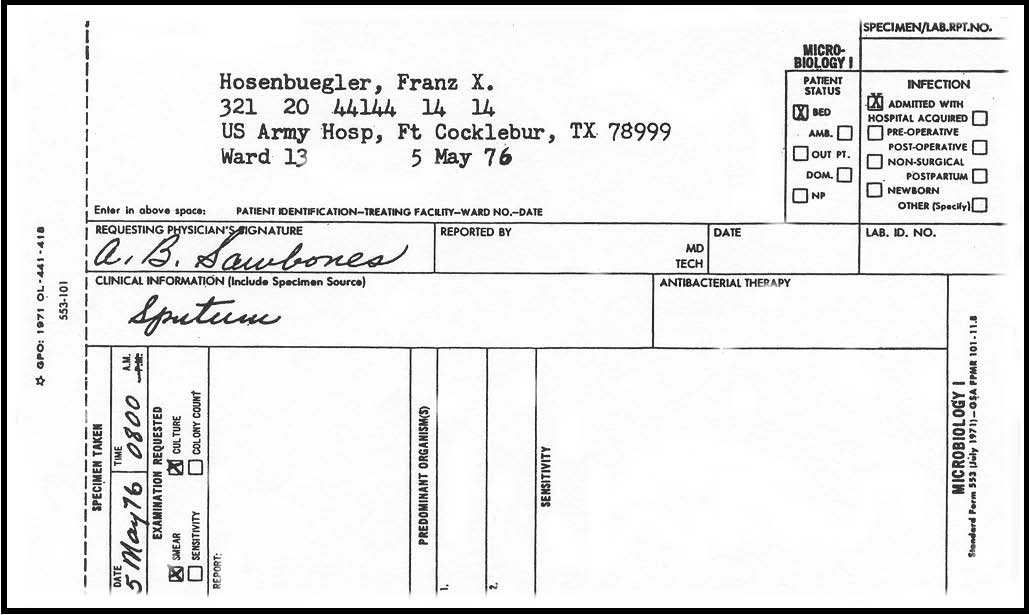Principles of Epidemiology and Microbiology
Lesson 3: Practical Application of Microbiology
Section III: Packing Microbiological Specimens for Shipment
3-6
Section III. PACKING MICROBIOLOGICAL SPECIMENS FOR SHIPMENT
3-6. GENERAL
The improper collecting and processing of microbiological specimens are often responsible for the failure to isolate and identify the agent responsible for a disease. The specific techniques for collecting various types of specimens do not fall within the purview of this sub course, but constitute laboratory procedures. However, the environmental health technician should be familiar with the following general considerations:
a. Instruments, containers, and other equipment coming in direct contact with most specimens must be sterile. The stool specimen is one exception.
b. Material for culture must not be exposed to germicides, disinfectant, or other chemicals.
c. Specimens should be properly labeled and dated.
d. Specimens should be delivered to the clinical laboratory immediately after collection.
e. Specimens should be inoculated to media immediately after delivery to the clinical laboratory.
f. To avoid contamination, the specimen should be cultured before making smears or performing special tests.
g. Material for culture should be obtained before the patient receives antibiotic or sulfonamide therapy. If this is not possible, the type of therapy should be indicated on the microbiology request form. SF 553 (Microbiology I) (figure 3-4) is used for most microbiology requests. SF 554 (Microbiology II) is used for suspected viral, fungal, and acid-fast bacterial infections.
Figure 3-4. SF 553 (Microbiology I)
h. If anaerobic cultures are requested, the specimen should be collected and transported in the manner prescribed by the laboratory.


